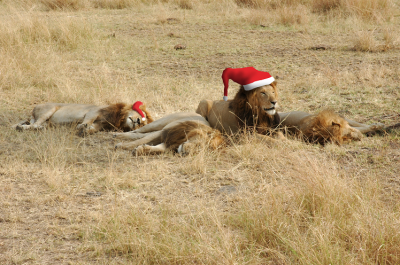|

Happy Christmas from LionAid!
As the year draws to a close and the festive season is upon us, the entire team at LionAid would like to extend our warmest wishes to all our incredible followers and supporters around the globe.
We wish you and your loved ones a very Merry Christmas filled with joy, peace, and good cheer.
Your dedication and passion are the driving force behind everything we do, helping us continue our vital work to secure a future for the magnificent African lion. Every share, every donation, and every word of encouragement makes a profound difference.
Looking Ahead to 2026: Our Key Priorities
As we look ahead to 2026, we are more committed than ever to our conservation efforts. Our key priorities for the coming year include:
Campaigning for a UK Ban: Urging the UK Government to finally bring in a complete ban on the import of hunting trophies into the UK.
Monitoring Botswana: To closely monitor and campaign against the serious threat of reviving lion trophy hunting in Botswana.
Education and Advocacy: To continue to highlight and educate that trophy hunting is fundamentally a wildlife crime, not conservation.
Expanding Conservation in Kenya: To raise the necessary funding to ensure that LionAid can complete its objectives and specifically to expand our successful human/wildlife conflict mitigation initiative in Merrueshi, Kenya, protecting both lions and livelihoods.
Securing Resources: To raise the necessary funding to ensure that LionAid can complete all its objectives.
Your Support is Our Roar
We understand how difficult it is these days to donate to charities, but please remember that we are totally dependent on your donations to enable us to continue with our critical work to save lions.
If you are able to donate to us, we would be so grateful for any support you can give.
Click here to DONATE any amount. Every donation counts.
We wish you a wonderful, prosperous, and peaceful New Year!
Thank you once again for standing with us. Together, we can ensure the lion's roar continues to echo across the savanna for generations to come
| 



